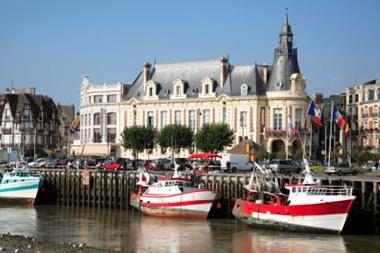It is not often that a risk manager gets confirmation of the wisdom of his decisions as clearly as Guy Lamand did on 21 September 2001 when the AZF fertiliser factory at Toulouse blew up. Without the measures instigated by Guy and his colleague Jean Faure, the city of Toulouse might have been blanketed in poisonous phosgene gas with many deaths.
Thanks to the protection put in place as a result of their recommendations, a stock of 80 tonnes of phosgene held at the adjacent factory belonging to the Societe Nationale des Poudres et Explosifs (SNPE) remained secure, even though the force of the blast at AZF was enough to kill an SNPE employee. Phosgene was used extensively as a weapon during World War I, where it was responsible for up to 85,000 deaths, but is now employed in the manufacture of plastics, pesticides and drugs.
In recognition of this farsightedness, the French government has awarded the two former colleagues the first ever national prize for civil defence. In doing so, the Minister of the Interior, Nicholas Sarkozy, cited their clear thinking and tenacity in their work for SNPE. He stated, "The catastrophe at the AZF factory, which grieved Toulouse and the whole country in September 2001, could have been far more deadly without the precautions recommended and implemented by the recipients of this civil defence prize, when you take into account - as our grandfathers did during the First World War - the effects of phosgene."
A lawyer by training, Lamand joined SNPE, which had the state monopoly on explosives, as its council in 1972, but soon found himself dealing with its insurance and then, rather as a natural consequence, risk management. SNPE had been under the direct control of the French government but was in the throes of becoming a limited company, albeit still state owned. Because it had been run by the civil service, says Lamand, the company had no insurance culture and little idea how to calculate values for its many properties.
Explosions
Explosions were an inescapable danger, given the nature of SNPE's products. A series of incidents culminated in August 1975 with an explosion at the company's factory in Pont de Buis in Brittany. It killed three people and destroyed half the plant and 250 nearby homes. From that point on, the company board and government ministers regarded prevention of fire and explosion as a priority.
However, Lamand soon realised that they were not the only serious risks faced by SNPE. Since the 1960s, the SNPE factory at Toulouse had, among other activities, specialised in the production of phosgene, primarily for pharmaceutical and agricultural products. Working with loss prevention engineers and insurers, he put forward a number of proposals to reduce the risks related to phosgene.
Lamand was fortunate in having in Jean Faure, the company's project director, a brilliant engineer who also quickly recognised that the security regulations for explosive material were not adequate for toxic chemicals. With the support of the then president of SNPE, Jean Tison, SNPE convinced the Government to provide the subsidies needed to create a new storage system at Toulouse. This all took place between 1980 and 1985.
As a result, when only a few years later, the AZF factory blew up killing 30 people, injuring more than 2,000 and leaving hundreds homeless, the 80 tonnes of phosgene remained secure in its double jacketed underground tanks. As General Etienne Copel, vice president of the French Civil Defence Committee, commented, "Of course, it is not certain that any stock stored at surface level would necessarily have been destroyed by the blast, but when you consider the projectiles created by the explosion and remember that an SNPE worker was killed, it is logical to think the some of the storage tanks could have been breached, with all the consequences that one can imagine."
That burying the phosgene also provides protection against a terrorist rocket or bomb may not have been at the forefront of SNPE thinking in the late 1980s, but it certainly was after the AZF explosion only 10 days after the World Trade Center attack.
Said Gen Copel, "The example given by Guy Lamand and Jean Faure provides many ideas to those responsible for managing installations at risk to take into account not just traditional risks which are well recorded, but also the new risks created by the development of large scale terrorist attacks."
Lamand says that like everyone else he had done some insurance law as part of his studies, but risk management was new, so he spent 150 francs (about $30) and joined the fledgling association for professionals in risk management and insurance, ACADEF. It was such a young organisation that he was immediately made a member of the council. In time, he became its president, a post he held for nine years. In 1993, he was instrumental in the creation of the French risk management association AMRAE, created through the fusion of ACADEF and the group of insurance buyers in industry and commerce, GACI.
Early in his time at SNPE, Lamand discovered the value of solidarity among insurance buyers. After the explosion at Pont de Buis, he was sent to deal with the losses, including third party claims for the destroyed houses. In doing so, however, he ruffled the feathers of SNPE's property insurer, because he had the temerity to use his own loss adjuster rather than theirs. When the insurer disputed payment, the ACADEF members rallied around and used their purchasing power to see that a way was found past the impasse by using a professor of insurance law to examine the claims. Thus Guy earned his stripes in SNPE, and it strengthened his position in improving the company's loss prevention.
Among the programmes he put into place was a system of valuations and inspection for SNPE's buildings in eight plants. "Each time I went to Toulouse," he says, "I realised the most important problem was not one of explosion - although that was present there, too - but of chemicals, especially the phosgene which was stored in a silo above ground. We decided it should be stored in a concrete jacket, so that if there was a leak, it would be confined within the jacket. Otherwise, it could have killed many people in the city."
Shortly afterwards, Lamand left SNPE for Framatome, a company that develops and builds nuclear power reactors. His job was as director of risk and insurance, including responsibility for security, the environment and the radiation risk to personnel. Without the experience at SNPE, he says, he would not have got the Framatome post. In July 1999, he moved to Cogema, the nuclear fuel technology business, as director of risk and insurance.
In 2001, Framatome and Cogema were both absorbed into a new French multi-national energy company, Areva. Lamand took on the job as director of risk management and insurance at the combined group in September 2001, so he was in post when the explosion at Toulouse shook France. "Coming so soon after 9/11, we immediately thought of terrorism," says Lamand. "We feared that it was at SNPE, but knew there wasn't enough explosive still there to cause that size of incident. Then we discovered it was at AZF. I was reassured that nothing had happened to the phosgene."
The award, of course, came several years later, and Lamand was delighted that his boss from SNPE, Jean Tison, now 86, who had supported him in his risk management activities, was able to attend the ceremony. It was Tison who intervened with the Government to get the necessary funding to protect the phosgene.
During his career, Lamand also involved himself in risk management on the wider stage - including a genuinely global role as chairman of the International Federation of Risk and Insurance Management Associations (IFRIMA). He worked for the creation of the European Nuclear Mutual, ELINI, and was its vice president between 2003 and 2005. Now technically retired, he remains active in studying and promoting risk management.
In June 2006, a month after receiving the civil defence prize, Guy received a StrategicRISK life time achievement award.
- Lee Coppack is editor of StrategicRISK's sister publication, Catastrophe Risk Management.
Gas! Gas! Quick, boys!
- An ecstasy of fumbling, Fitting the clumsy helmets just in time;
But someone still was yelling out and stumbling,
And flound'ring like a man in fire or lime ...
Dim, through the misty panes and thick green light,
As under a green sea, I saw him drowning.
In all my dreams, before my helpless sight,
He plunges at me, guttering, choking, drowning.
Dulce et Decorum Est, Wilfred Owen, 1917.


















